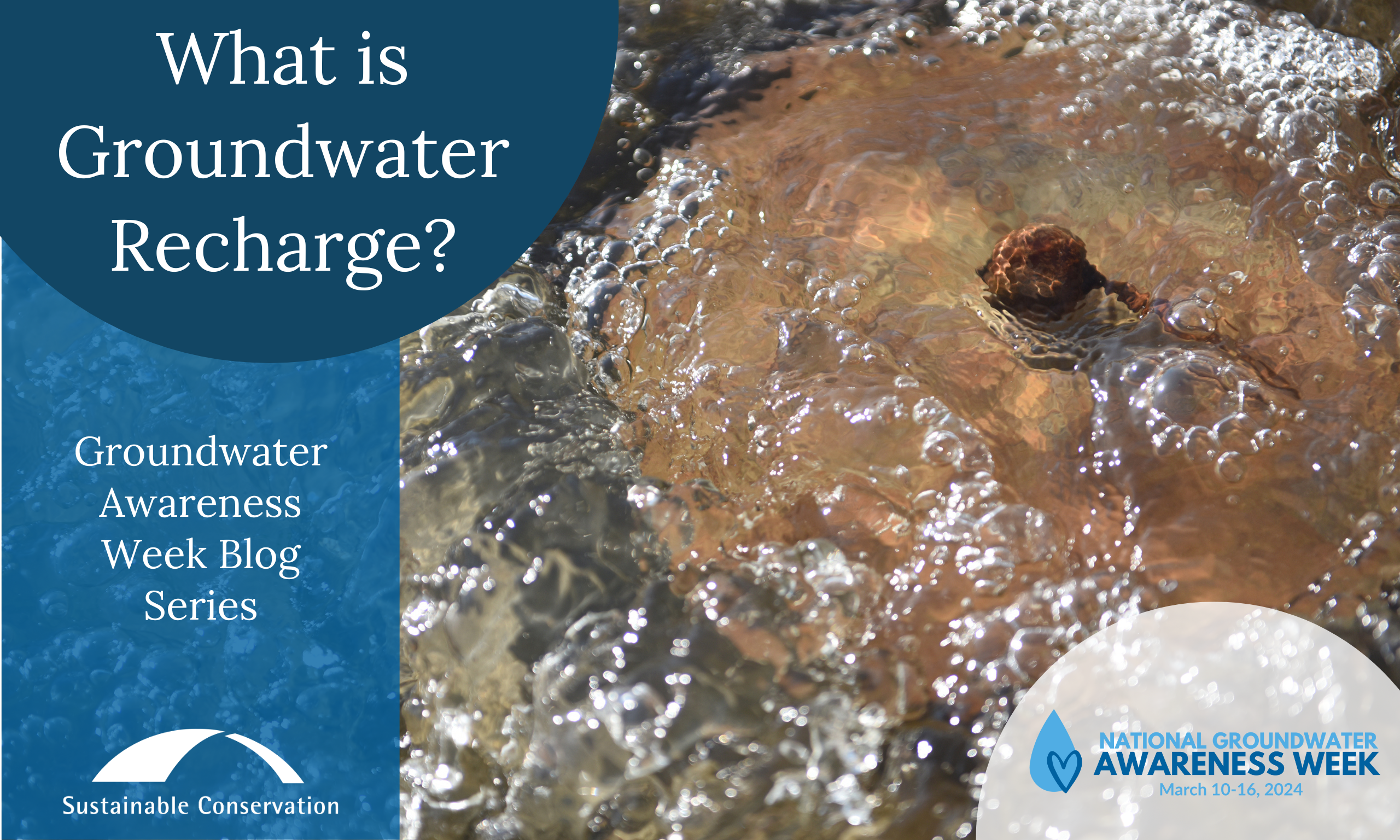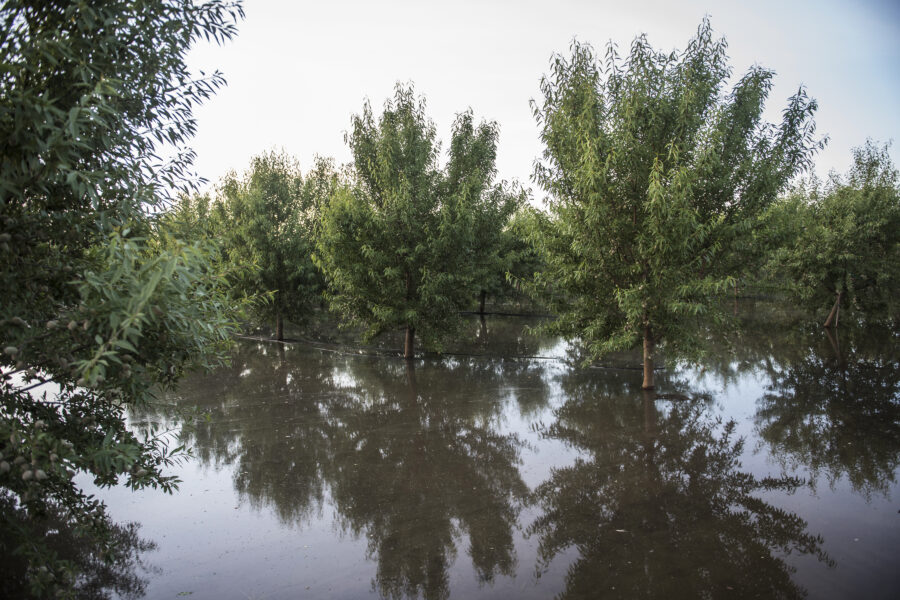
Happy National Groundwater Awareness Week! This week, we kick off a blog series focused on all things groundwater recharge. We’ll further highlight how Sustainable Conservation is contributing to advancing recharge through tools, policies, partnerships, and research. We’ll explore the significance of groundwater recharge, its role in climate adaptation, and its role in helping the state achieve sustainable groundwater management.
Groundwater recharge is the process of surface water percolating underground to replenish aquifers, which can store massive amounts of fresh water. In fact, our state’s aquifers have three times the storage capacity of our surface reservoirs.
Recharge is crucial to maintain water availability for communities, sustain ecosystems, and support human activities. Recharge can occur through natural hydrologic processes, such as wetlands and floodplains, or through more engineered systems such as retention basins and on-farm recharge.

On-farm groundwater recharge at Terranova Ranch in Fresno County. Photo by Paolo Vescia
Recharge for Climate Change Adaptation
Groundwater recharge is a key strategy for California’s climate change adaptation. As the state faces both intensified droughts and flooding, recharge can help smooth the whiplash of scarcity to deluge. Excess surface water flows during wet years recharge aquifers, making water available during dry years. In addition to replenishing aquifers and improving water supply reliability, recharge can reduce flood impacts downstream, enhance ecosystems, and improve community drinking water.
Recharge for SGMA Implementation
Enacted in 2014, the California Sustainable Groundwater Management Act (SGMA) was landmark legislation to ensure comprehensive and sustainable management of California’s groundwater resources. Ten years later, SGMA is being actively implemented across the state, in which local Groundwater Sustainability Agencies (GSAs) are implementing their Groundwater Sustainability Plans (GSPs). Groundwater recharge is a central component of many of these plans, as it can help subbasins come back into balance by replenishing depleted aquifers.
Increasing groundwater recharge is a critical component of California’s water management strategy, particularly in the face of climate change. By replenishing aquifers, recharge helps to build water security, support ecosystems, and mitigate the impacts of droughts and flooding alike. As we celebrate National Groundwater Awareness Week, we’d like to put a particular spotlight on the importance of groundwater recharge in building climate resilience and achieving sustainable water management goals in California and beyond. Together, through collaborative efforts and innovative approaches, we can safeguard this invaluable resource for current and future generations.
For more information and materials on groundwater, visit the NGWA website, and stay tuned for the upcoming installments of our Groundwater Week Blog Series!


